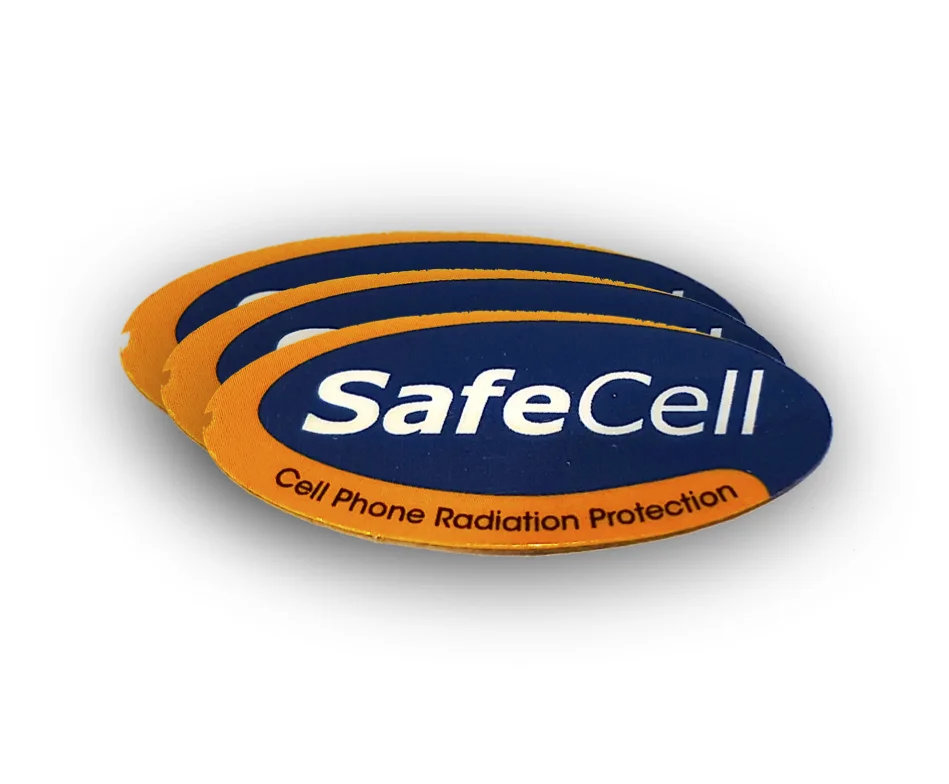Here are 4 of the most common questions asked about cell phone radiation
Am I exposed to the same radiation when I browse the internet as I am on a cell phone?
Radio frequency energy is a form of non-ionizing radiation given off by cellular and portable phones, Wi-Fi routers and countless other devices. Scientific studies have linked electromagnetic radiation from long-term cellphone use to an increased risk of brain cancer and other health problems.
Research suggests that electromagnetic radiation interferes with our body’s natural processes—even damaging our DNA and causing cells to malfunction. While cell phones emit relatively weak electromagnetic radiation, it still affects nearby cells and tissues because the devices are used frequently and kept close to the body.
Cell phones emit radiation whenever they transmit the signal outward, toward the cell phone tower. Some amount of radiation is emitted no matter what the activity, even when the phone is on, but not in use. Speaking into the phone would produce more radiation emission than receiving a signal, such as during a data download.
Cell phones also emit the most radiation when they are attempting to connect to cellular towers. A moving phone, such as used while riding a train, or a phone in an area very far from cell phone towers, has to work harder, giving off more radiation. Users can avoid using their cell phones in elevators or whenever the signal is very weak if they want to reduce their exposure, experts say.
Is Wi-Fi as risky as cellphone radiation?
Wireless communication technologies are always changing, using different frequency bands, which are measured in megahertz (MHz) or gigahertz (GHz). In the U.S., 2G and 3G cell phone technologies have primarily operated in the 800-1900 MHz range. You can find the frequency range in which your phone operates from your cell phone carrier. 4G technologies have used frequency bands in the same range, as well as moving to higher frequencies in the gigahertz range.
Most home Wi-Fi routers operate in the 2400 MHz (which is the same as 2.4 GHz) range. 5G Wi-FI operates in a higher range, around 5 GHz or greater.
The issue is that Scientists really don’t know what are the effects of these different frequency ranges on human health, because most studies, including the research that gave rise to cellphone radiation classified as a possible carcinogen, have been done on conventional cellphone radiation. When it comes to 4G and 5G, with are extremely higher frequencies, we are left guessing.
Distance matters – the closer the body is to the source of radiation, the more radiation users will absorb. Cell phones are frequently used directly next to the body, and the potential for radiation absorption is great. Wi-Fi routers are typically farther away, decreasing exposure. Some experts recommend against keeping a Wi-Fi router next to the bed or the bedroom but rather placing it in the area of the house where people spend less time.
What about cellphones and children?
Studies have suggested that cell phone radiation can make the blood-brain barrier more permeable. (Cell Phone Radiation Damages Your Blood-Brain Barrier, Salford, LG, AE Brun, JL Eberhardt, L Malmgren and BRR Persson. 2003.) Research from the National Institute on Drug Abuse clearly demonstrated that cellphone radiation alters brain activity.
Children’s and teens’ brains and bodies are developing and growing rapidly. Age and head/body shape differences matter when it comes to radiation absorption. The brain of a child or slight woman, with their smaller, thin skull bones, would absorb significantly more radiation than that of a large man. The FCC cell phone radiation regulations do not account for the potentially higher risks of cellphone emissions to children and other vulnerable populations.
A simple solution is to teach children how to use a headset and speaker phone rather than having them hold the phone close to their ear while they talk. Some experts recommend parents to limit their children's cell phone use to texting, important calls and other emergencies.
What about tablets and laptops?
These can be in constant touch with the body and are used wirelessly for most people.
When using tablets and laptops, there are two things to keep in mind: distance from the body and type of use. Like phones, these wireless-enabled devices transmit more radiation when they send the signal out – for example, when talking into a tablet. A good rule of thumb is to keep the tablet or laptop on a table or supported by its own stand, rather than holding it on your lap.
CELL PHONE RADIATION IS REAL. Why Risk it? Protect yourself with Safe Cell and our 30 day money back guarantee. If for any reason you're not satisfied return within 30 days for a full refund including shipping.
Conclusion, and how to reduce health risks
These studies are ongoing, it is important to reduce your exposure by increasing distance from the phone (use the speaker phone when possible) and use a cell phone radiation protection shield.
Let’s face it, unless you’re going to give up using your phone entirely, you should consider your health and the health risks of cell phone use.
The Safe Cell radiation protection shield is a tested and proven device for reducing to reduce harmful effects of cell phone use.
Click here to see our products.
Why Risk it!
Follow us for breaking news and updates!



